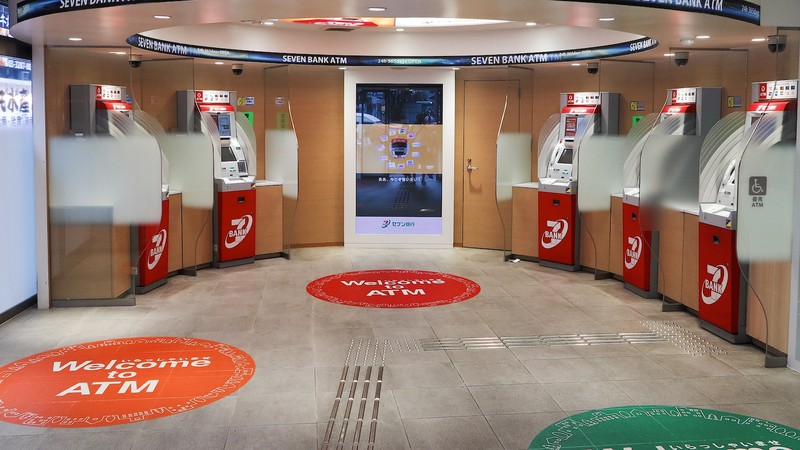Electronic banking dates back at least to 1953.

ATMS were one of the earliest forms of online networked banking. MIKI Yoshihito / Wikimedia Commons C.C. 2.0 Generic License
For almost 500 years, since Florentine ruler Cosimo de Medici innovated many of what became the fundamental practices of modern banking, the world’s financial system remained largely status quo. A few technological innovations such as wire transfer (which dates as far back as 1871), and credit cards built on the traditional system somewhat. In 1953, however, researchers at Stanford Research Institute in Menlo Park built a large mainframe computer for use by Bank of America, to solve what had become a crisis of mounting paper. The bank’s customers were writing checks faster than the staff could process them.
The researchers created ERMA, the Electronic Recording Machine for Accounting, to process the checks. The financial system went digital. Over the next 14 years, banking became increasingly computerized. By 1967, three different “cashpoint” machines, now better known as ATMs (Automated Teller Machines), came into use—one in Sweden, two in the United Kingdom.
The ATM was a technology ahead of its time. It took a couple of decades for the machines to catch on with banks, but by 1984 there were about 100,000 in operation around the world. Today that total exceeds 3 million.
Also in the 1980s, a few banks experimented with a rudimentary form of online banking, allowing customers to access their accounts and make transactions via telephone. By 2007, with the advent of smartphones, almost any conventional banking function could be conducted online.
Digital banking has made the financial system more convenient, speedier and more accessible than ever. But a more recent innovation known as financial technology, or “fintech,” aims to circumvent traditional banks altogether.
Digital banking took traditional banks online. Fintech starts online, allowing users to send and receive money, as well as a wide variety of other transactions, without going through a bank at all. The most famous and most valuable fintech company is PayPal, with its 286 million users and valuation of $220 billion.
The company was founded in 2000 when Elon Musk merged his fintech start-up, X.com, with a competitor known as Confinity founded by Peter Thiel and three other Silicon Valley investors. The company has evolved over the subsequent two decades, most notably being purchased by the online auction site eBay in 2002, then split off again in 2015. PayPal now owns a portfolio of similar fintech firms, including Venmo and Xoom, enabling a range of transactions from simple payments and receipts to fraud disputes, product returns and “buy now, pay later” deals.
It seems that between digital banking and fintech, most every possible transaction involving cash can now happen online. The next step would be to take cash itself online. And that is what led to the creation of cryptocurrency.
Long form articles which explain how something works, or provide context or background information about a current issue or topic.